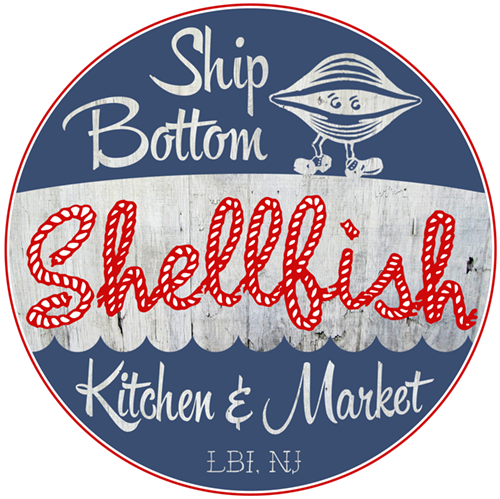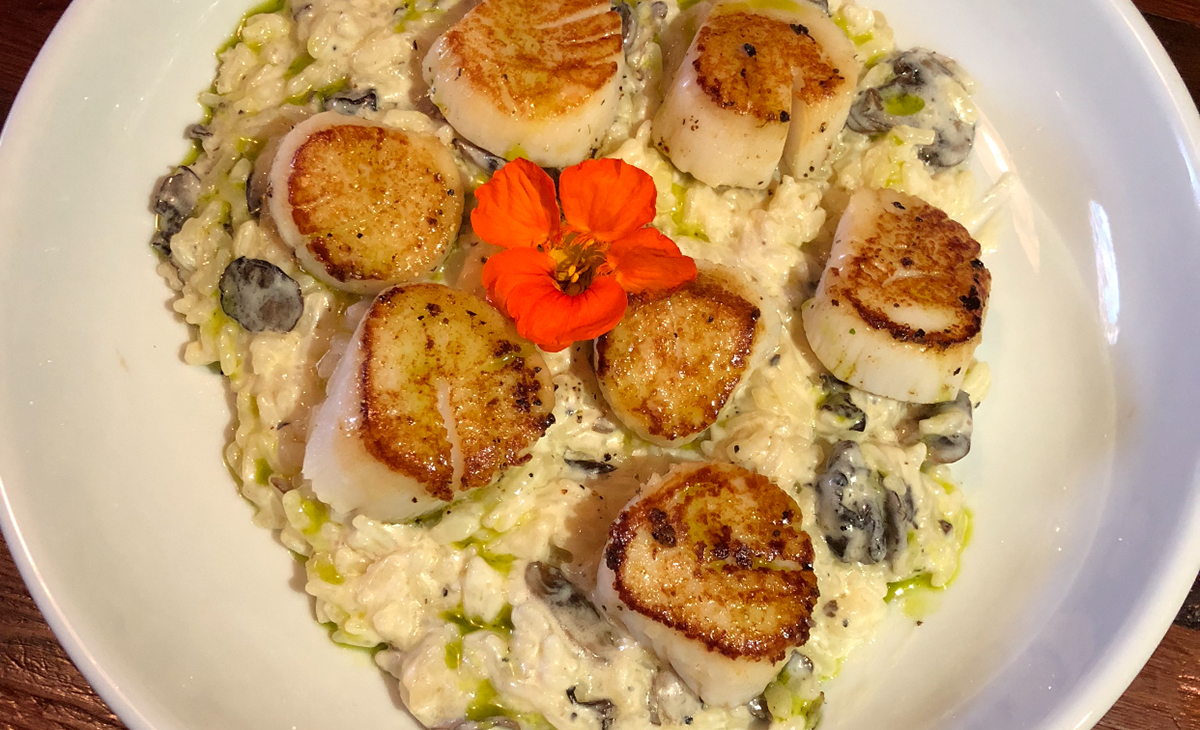Year round and local: scallops
Having a working fishing fleet right on LBI is so important to our restaurants. But the one product that comes from the sea through our docks that’s always entirely local is scallops.
With all of our other products, we buy local whenever it’s available. It assures freshness and tends to be high quality products. But scallops are a local offering 100 percent of the time. And late/winter and spring is prime time for these delicious nuggets.
This mollusk lives on the sea floor, but unlike clams which tend to dig in, or oysters that attach to each other to form reefs, scallops move at their own free will, by clapping their shell together with a strong abductor muscle. The shooting water propels them backwards and they move around the ocean.
Our Atlantic Sea Scallop Fisheryis one of the most important in the world. It reaches from the Mid-Atlantic up to the Canadian Maritime. Barnegat Light and Viking Village, are home to one of three major scalloping ports in New Jersey, along with Cape May and Point Pleasant. The largest landing port for scallops in the US, is New Bedford, Massachusetts.
Viking Villageis home to about 26 scallop boats, all of which are dredge boats. The Larson family own 12 of them. They drag a dredge along the ocean floor, picking up a mix of what’s down there. The dredge is dumped onto the deck of the boat and the crew shucks them onboard. Shells are tossed back into the sea, where other fish eat the membrane and other innards.
https://www.youtube.com/watch?v=msMlM4xprI0
That abductor muscle is the part that we eat. These are separated into three different sizes and stored an insulated hold. Bigger boats carry as many as 20 tons of ice. Scallop trips are usually one week to 10 days. The boats are kept impeccably clean because, the scallops are now a food product. A good trip can produce 18,000 pounds of scallop meat.
Generally, the boats are after larger scallops, which are just as tender and tasty as smaller ones, and tend toward colder water. Juvenile scallops are the ones that reproduce, so by targeting larger scallops, scalloping is overall very sustainable. Juvenile scallops actually sift right out of the dredge. In 2013, the Marine Stewardship Councildeclared the Atlantic Sea Scallop and the approximately 350 licensed boats, as a certified sustainable fishery. Scalloping supports many local families.
Kirk Larson, a captain and manager of several boats at Viking Village, is a fifth generation scalloper. He explains that the fishery is unique in that they govern their own industry with NOAA Fisheries. They have a system where authorities can track them, to make sure they’re not in off-limit waters. Fish and game officers will arrive for a “pack out” (unloading the boat) to ensure they are within legal limits.
“We’re one of the only industries that regulates itself,” says Larson, “We do our own science and research and fund it ourselves. We have Research Set Aside (RSA) trips that we do, where all the profits of those scallops pay for scientists who accompany us on certain trips.”
He explains that they will close off certain areas to let scallop populations mature, not unlike a farmer rotating his fields. They are also allowed a certain amount of incidental bycatch, which are mostly flatfish.
“We keep what we want. We don’t want juvenile scallops, so they go overboard to grow and continue reproducing,” Larson explains, “We have ‘timed trips’ where we’re on the clock as soon as we leave the inlet and off when we get back. We can keep as much as we can hold. We get about 30 days a year to fish that way, so we make the most if it. Then there are trips where we can keep a certain number of pounds.”
When the boat arrives at the dock, the bags of meat are hauled from the hold and packed for shipping. Barnegat Light scallops are sold around the world, but we always secure our share for the menu at all of our locations as well as the fish markets at Mud City and Ship Bottom Shellfish.
Scallops have a mildly sweet flavor and a soft, fleshy texture that folks love. They’re high in protein (16-23 grams pers serving) and low in fat.
Broiled oysters, or hand-breaded and fried have been staples in our restaurants for years as their own dish or as the broiled/fried combo. And we feel scallops are what really makes our creamy seafood bisque at Mud City Crab House and Ship Bottom Shellfish. They are the perfect complement in Mud City’s Shrimp and Scallop Linguini or the Santa Cruz at the Black Whale. Shellfish fans are particular to the Blackened Scallops with Thai Mayo app. The Scallops and Bacon (pork belly) are quickly becoming a favorite at Parker’s Garage.
But most importantly, they’re the one source of local harvest we can always count on.







